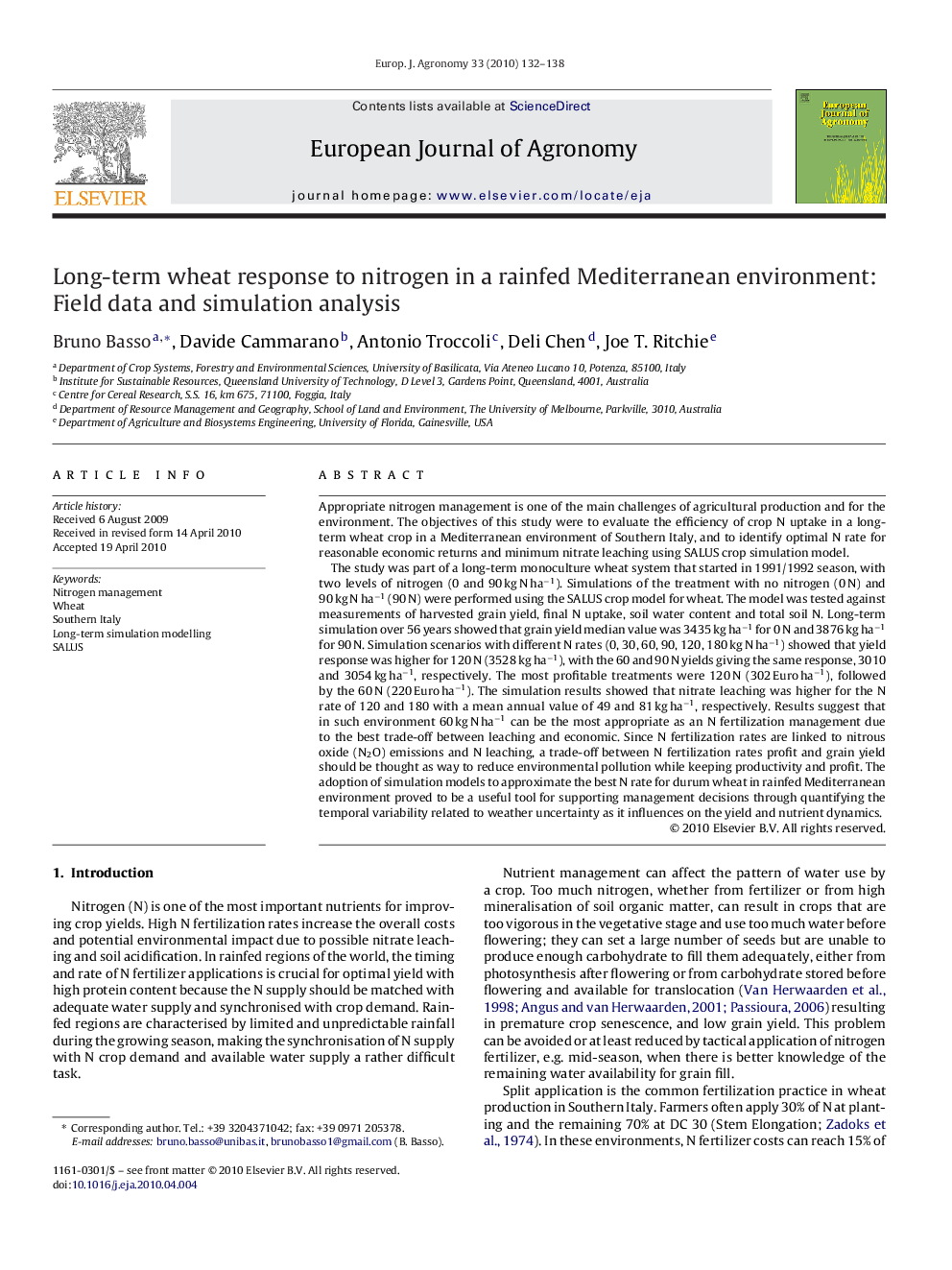| کد مقاله | کد نشریه | سال انتشار | مقاله انگلیسی | نسخه تمام متن |
|---|---|---|---|---|
| 4509300 | 1624501 | 2010 | 7 صفحه PDF | دانلود رایگان |

Appropriate nitrogen management is one of the main challenges of agricultural production and for the environment. The objectives of this study were to evaluate the efficiency of crop N uptake in a long-term wheat crop in a Mediterranean environment of Southern Italy, and to identify optimal N rate for reasonable economic returns and minimum nitrate leaching using SALUS crop simulation model.The study was part of a long-term monoculture wheat system that started in 1991/1992 season, with two levels of nitrogen (0 and 90 kg N ha−1). Simulations of the treatment with no nitrogen (0 N) and 90 kg N ha−1 (90 N) were performed using the SALUS crop model for wheat. The model was tested against measurements of harvested grain yield, final N uptake, soil water content and total soil N. Long-term simulation over 56 years showed that grain yield median value was 3435 kg ha−1 for 0 N and 3876 kg ha−1 for 90 N. Simulation scenarios with different N rates (0, 30, 60, 90, 120, 180 kg N ha−1) showed that yield response was higher for 120 N (3528 kg ha−1), with the 60 and 90 N yields giving the same response, 3010 and 3054 kg ha−1, respectively. The most profitable treatments were 120 N (302 Euro ha−1), followed by the 60 N (220 Euro ha−1). The simulation results showed that nitrate leaching was higher for the N rate of 120 and 180 with a mean annual value of 49 and 81 kg ha−1, respectively. Results suggest that in such environment 60 kg N ha−1 can be the most appropriate as an N fertilization management due to the best trade-off between leaching and economic. Since N fertilization rates are linked to nitrous oxide (N2O) emissions and N leaching, a trade-off between N fertilization rates profit and grain yield should be thought as way to reduce environmental pollution while keeping productivity and profit. The adoption of simulation models to approximate the best N rate for durum wheat in rainfed Mediterranean environment proved to be a useful tool for supporting management decisions through quantifying the temporal variability related to weather uncertainty as it influences on the yield and nutrient dynamics.
Journal: European Journal of Agronomy - Volume 33, Issue 2, August 2010, Pages 132–138